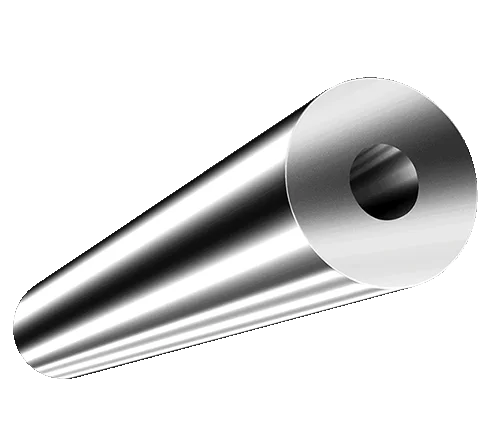Shandong Qilu lndustrial Co.,Ltd.
The Role of Stainless Steel Forgings in Modern Industries
Introduction

Stainless steel forging have emerged as indispensable components across various industries, owing to their exceptional properties and versatility. This blog delves into the significance of stainless steel forging in modern manufacturing processes, exploring their applications, advantages, and future prospects.
The Evolution of Stainless Steel Forgings
Stainless steel forgings have a rich history, evolving from traditional blacksmithing techniques to advanced precision forging methods. Early civilizations utilized crude forging processes to shape metals for tools and weapons. However, with the discovery of stainless steel in the early 20th century, forging techniques underwent a revolution. The development of alloy compositions and innovative forging methods led to the production of high-quality stainless steel forging with superior mechanical properties and corrosion resistance.
Applications Across Diverse Industries
Stainless steel forging find extensive applications across a wide spectrum of industries, including:
- Automotive: In the automotive sector, stainless steel forging are crucial for manufacturing engine components, transmission parts, and chassis components. Their high strength-to-weight ratio, resistance to heat and corrosion, make them ideal for demanding automotive applications.
- Aerospace: The aerospace industry relies on stainless steel forging for critical components such as landing gear, turbine blades, and structural elements. The superior mechanical properties and lightweight nature of stainless steel forging contribute to enhanced aircraft performance and safety.
- Oil and Gas: Stainless steel forging play a vital role in the oil and gas sector, where they are used in pipelines, valves, and drilling equipment. Their resistance to corrosive environments and high-pressure conditions make them indispensable for offshore and onshore operations.
- Power Generation: In power generation facilities, stainless steel forging are utilized for turbine shafts, generator components, and steam valves. Their excellent heat resistance and durability ensure reliable performance in demanding power plant environments.
- Medical: The medical industry benefits from stainless steel forging in the manufacturing of surgical instruments, implants, and medical devices. The biocompatibility and sterilization capabilities of stainless steel make it an ideal choice for critical healthcare applications.
Advantages of Stainless Steel Forgings
Stainless steel forgings offer numerous advantages over other manufacturing methods, including:
- Superior Strength and Durability: Stainless steel forgings exhibit high tensile strength and toughness, ensuring long-term durability and reliability in demanding operating conditions.
- Corrosion Resistance: The inherent corrosion resistance of stainless steel makes it suitable for applications in harsh environments, such as marine, chemical, and industrial settings.
- Precision Engineering: Advanced forging techniques enable the production of complex shapes and intricate designs with tight tolerances, ensuring optimal performance and functionality.
- Cost Efficiency: While initial production costs may be higher than other materials, the long-term benefits of stainless steel forgings, such as reduced maintenance and replacement costs, outweigh the initial investment.
Stainless Steel Forgings: A Sustainable Solution
In an era where sustainability is paramount, stainless steel forging offer a sustainable solution to the challenges faced by modern industries. Their longevity, recyclability, and energy efficiency contribute to environmental conservation and resource optimization. By choosing stainless steel forgings, industries can minimize their carbon footprint and embrace a more sustainable approach to manufacturing.
Characteristics of different grades of stainless steel

| Stainless Steel Grade | Composition (%) | Tensile Strength (MPa) | Yield Strength (MPa) | Hardness (HV) | Corrosion Resistance |
|---|---|---|---|---|---|
| 304 | C: ≤ 0.08, Cr: 18-20, Ni: 8-10 | 515-690 | ≥ 205 | ≤ 200 | Excellent |
| 316 | C: ≤ 0.08, Cr: 16-18, Ni: 10-14 | 515-690 | ≥ 205 | ≤ 217 | Excellent |
| 410 | C: ≤ 0.15, Cr: 11.5-13.5 | 480-795 | ≥ 275 | ≤ 240 | Moderate |
| 17-4PH | C: ≤ 0.07, Cr: 15-17.5, Ni: 3-5 | 1035-1275 | ≥ 860 | ≤ 363 | Excellent |
FAQ
Q:What is the difference between stainless steel forgings and castings?
A:Stainless steel forging are formed by shaping heated metal through mechanical force, whereas castings involve pouring molten metal into a mold and allowing it to solidify. Forgins typically result in superior mechanical properties and finer grain structure compared to castings.
Q:Are stainless steel forgings suitable for high-temperature applications?
A:Yes, stainless steel forging exhibit excellent heat resistance and are commonly used in high-temperature environments such as power generation and aerospace applications.
Q:Can stainless steel forgings be customized according to specific requirements?
A:Yes, stainless steel forging can be customized in terms of shape, size, and material composition to meet the unique requirements of various industries and applications.
Conclusion
In conclusion, stainless steel forgings play a pivotal role in modern industries, offering unparalleled strength, durability, and corrosion resistance. From automotive and aerospace to oil and gas and medical sectors, the versatility of stainless steel forgings continues to drive innovation and advancements across diverse applications. As industries strive for sustainability and performance excellence, stainless steel forgings emerge as a reliable solution to meet the evolving demands of the 21st century.
